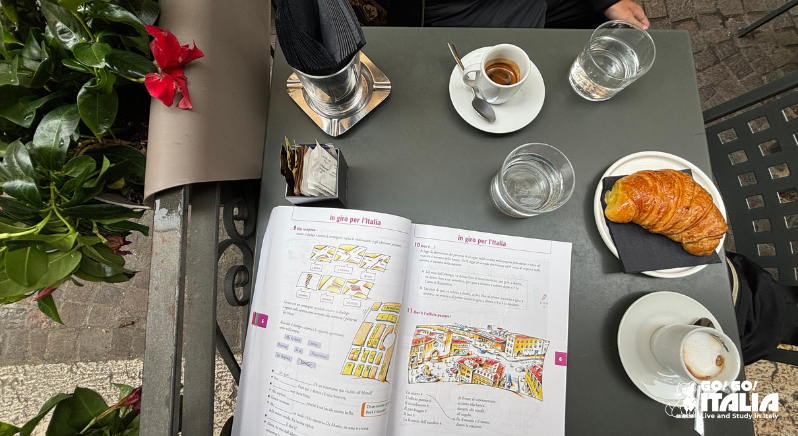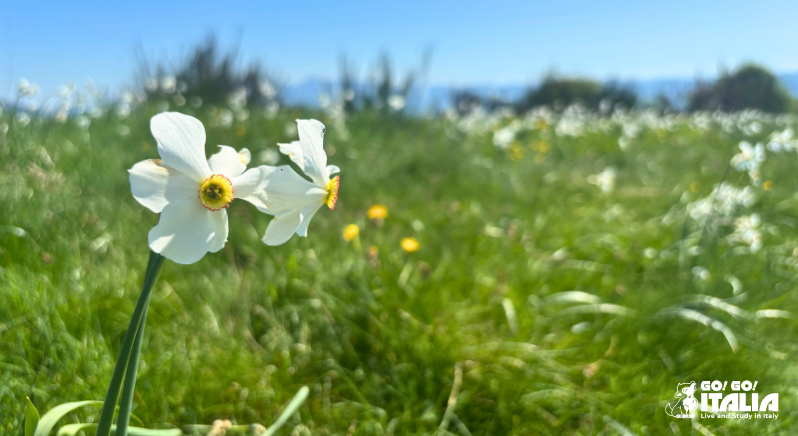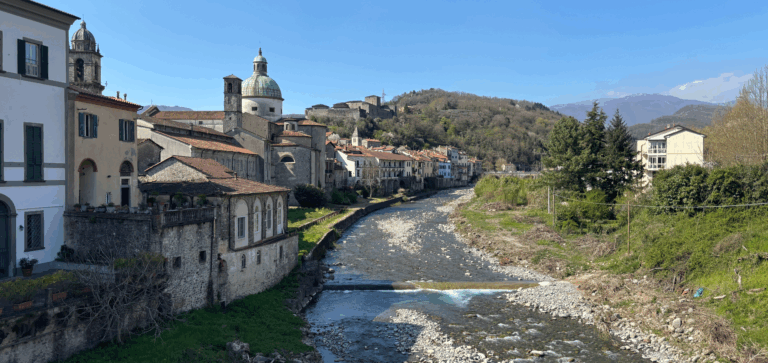Italian proverbs often capture the spirit of everyday life, and the poem I 12 mesi (The 12 Months) is a perfect example. This playful and poetic piece describes the character of each month in Italy, making it not only a charming reflection of agricultural rhythms and weather patterns, but also a great tool for learning and practicing Italian. Like many traditional sayings, it carries a touch of timeless wisdom passed down through generations.

Here’s a breakdown of each verse, its English translation, and what it tells us about life and seasons in Italy.
Lo sapete che gennaio
tiene i frutti nel solaio,
(Did you know that January
keeps the fruits in the attic?)
January is the heart of winter. The fruits mentioned here refer to dried fruits and preserved foods stored in the attic or pantry to last through the cold season. It’s a reminder of a time when people relied on food stored from the harvest.
che febbraio è piccolino,
breve, freddo e biricchino?
(That February is tiny,
short, cold, and mischievous?)
February is the shortest month and often brings unpredictable weather. Describing it as “mischievous” (biricchino) suggests its tricky nature — it may feel like spring one day and deep winter the next.
Arriva marzo pazzerello:
esce il sole e prendi l’ombrello!
(Here comes crazy March:
the sun comes out, but take your umbrella! )
This famous Italian proverb — “Marzo pazzerello, esce il sole e prendi l’ombrello” — highlights March’s famously inconsistent weather. It’s a month of transition where rain showers can appear suddenly, even after sunshine.
Dietro a lui viene aprile:
sbadiglia, sbadiglia, è dolce dormire.
(After him comes April:
yawn, yawn, it’s sweet to sleep.)
April brings milder days and spring laziness. The double “sbadiglia” (yawn) mimics a sleepy, relaxing time. It captures the comfort of spring mornings and the pleasure of rest.
Esplode maggio ed è beato
chi per tempo ha seminato.
(May explodes and blessed is
the one who sowed in time.)
May is when everything blooms and grows. It praises those who worked earlier in the season — farmers, gardeners — since they’ll now begin to see results. It’s a lesson in patience and preparation.
Biondo ondeggia di giugno il grano
pronto sta il contadino con falce in mano.
(In June the blond wheat waves,
the farmer stands ready, sickle in hand.)
This paints a vivid image of June in rural Italy. The golden fields of wheat are ready for harvest, and the farmer, tool in hand, prepares for the hard but rewarding work.
Luglio – lunghe son le giornate –
porta il pieno dell’estate.
(July – the days are long –
brings the height of summer.)
July is when summer is in full swing. Long daylight hours and warm temperatures define the month, making it perfect for vacations and outdoor life.
Ecco, torrido d’agosto,
il solleone brucia il bosco.
(Here is scorching August,
the sun’s heat burns the forest.)
August is the hottest month in Italy. The phrase “solleone” refers to the peak summer sun. It warns of the heat’s power, especially the risk of forest fires and drought.
È settembre un mese bello:
sole misto a venticello.
(September is a beautiful month:
sun mixed with a light breeze.)
September marks the end of summer but still holds onto warmth. It’s considered one of the most pleasant months — mild, breezy, and ideal for harvesting grapes or enjoying the countryside.
Davvero ottobre è generoso
e di tutti il più fruttuoso.
(October is truly generous
and of all, the most fruitful.)
October brings abundant harvests: grapes, olives, apples, and more. It’s a month of plenty, which is why it’s described as generous and fruitful.
A novembre i dì gelati
son dannosi ai campi seminati.
(In November, frozen days
are harmful to the sown fields.)
November is when the cold begins to settle in. Frost can damage crops planted for spring, so the verse serves as a warning to farmers and reminds us of nature’s unpredictability.
A dicembre, neve abbondante
salva il grano per il pane croccante.
(In December, abundant snow
saves the wheat for crunchy bread.)
Surprisingly, snow is seen here as a good thing — it protects the soil and crops from harsher freezes. This preservation ensures a successful harvest for the wheat that will become Italy’s beloved bread.

Italian proverbs – a way to learn Italian
These poetic verses remind us of the wisdom found in observing nature’s rhythms and how they shape daily life throughout the year. At the same time, they offer a playful and engaging way to connect with the Italian language and help commit it to memory.
Want to learn Italian in Italy? Contact us!
Want to know more about Italy and Italian culture? Follow us on our social media page!



